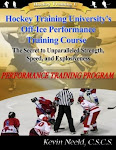
Soccer is perhaps the most demanding of all sports.
In the modern game (at any level) soccer training and conditioning is essential.
Few sports are played on as large a playing field, lasting as long and without regular rest periods.
Players cover 8-12km during a match, consisting of 24% walking, 36% jogging, 20% coursing, 11% sprinting, 7% moving backwards and 2% moving whilst in possession of the ball.
Soccer players posses excellent endurance with VO2max reported to range between 55 and 70 ml/kg/min in elite performers. The game is played at an average intensity close to the lactate threshold - approximately 80-90% of maximum heart rate.
How important is the correct type of endurance training in soccer?
The greater a player's aerobic capacity, the more ground they cover during a typical game. Additionally, improved endurance also increases the number of sprints completed in a game. By improving the VO2max of youth soccer players by 11% over an 8 week period, a 20% increase in total distance covered during competitive match play was manifested, along with a 23% increase in involvements with the ball and a 100% increase in the number of sprints performed by each player.
What about other forms of conditioning?
Strength training now plays a major role in soccer. However, simply lifting weights with the traditional "3 sets of 10 repetitions" approach is not an efficient way to spend training time. Soccer requires a balance of explosive power and muscular endurance. Some players may benefit from increasing their lean mass but even they should focus on converting much of their strength into soccer-specific power.
Strength training for soccer also helps to correct muscle imbalances. Soccer players in particualr are prone to developing overly strong quadriceps in relation to their hamstrings and a well-formed strength plan can address this and prevent future injury.
Few players (and coaches) outside of the professional game fully appreciate the impact that proper conditioning can have on performance. The effect can be truly incredible. There is quite rightly a heavy emphasis on technique and skill development at every level of the game, but skill can only be applied within the limits of player's physical capacity.
We've all seen those players who lack good technique yet still prove to be deadly effective. Often their speed and power is enough to outshine opponents and team mates who posses significantly greater talent. There is no substitute for correct technique. But the greater a player's soccer-specific fitness, the higher the level they can apply what skill they do have.
In bite-size sections, this mini course covers the most important elements of fitness in the game of soccer. Starting today with endurance training, it progresses through strength, power and speed training as well as testing soccer fitness and proper nutrition.
Part 1 - Soccer Endurance Training
Elite soccer players posses excellent endurance. Typical values for VO2max (the technical term for an individual's aerobic power) range between 55 and 70ml/kg/min. To give these figures some context, young, inactive individuals will typical have a VO2max of 40-50ml/kg/min. How important is soccer endurance trainingr?
Studies have shown that the greater a player's aerobic capacity, the more ground they cover during a typical game. Additionally, improved endurance also increases the number of sprints completed in a game. In one study, by improving the VO2max of youth soccer players by 11% over an 8 week period, a 20% increase in total distance covered during competitive match play was seen, along with a 23% increase in involvement with the ball and a 100% increase in the number of sprints performed by each player!
Soccer endurance training falls into one of 2 categories:
AEROBIC endurance conditioning
ANAEROBIC endurance conditioning
Aerobic Endurance Training
Aerobic endurance training improves the body’s ability to deliver and use oxygen. It will allow players to sustain an overall higher rate of work during the ninety minutes. They will also recover more quickly after repeated sprints and high intensity periods of play.
Sample Aerobic Endurance Drill
This drill is based on fartlek training, which is more specific to soccer and less monotonous than running laps of a soccer pitch:
Warm up with a steady jog for 10 minutes
Run hard for 3 minutes, jog slowly for 1 minute
Repeat 6-8 times
Cool down at a steady pace for 10 minutes























No comments:
Post a Comment